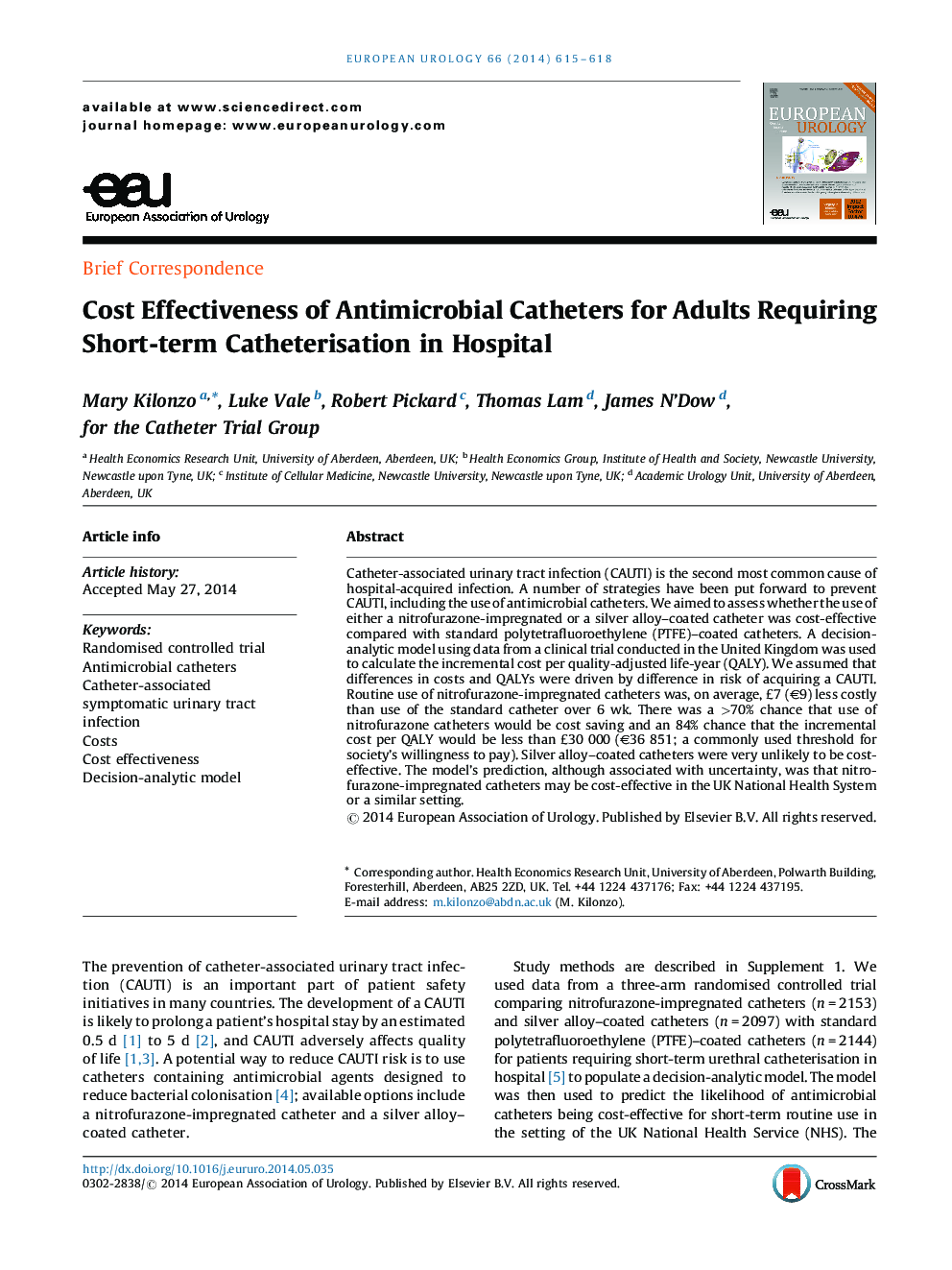| Article ID | Journal | Published Year | Pages | File Type |
|---|---|---|---|---|
| 6177996 | European Urology | 2014 | 4 Pages |
Abstract
Catheter-associated urinary tract infection (CAUTI) is the second most common cause of hospital-acquired infection. A number of strategies have been put forward to prevent CAUTI, including the use of antimicrobial catheters. We aimed to assess whether the use of either a nitrofurazone-impregnated or a silver alloy-coated catheter was cost-effective compared with standard polytetrafluoroethylene (PTFE)-coated catheters. A decision-analytic model using data from a clinical trial conducted in the United Kingdom was used to calculate the incremental cost per quality-adjusted life-year (QALY). We assumed that differences in costs and QALYs were driven by difference in risk of acquiring a CAUTI. Routine use of nitrofurazone-impregnated catheters was, on average, £7 (â¬9) less costly than use of the standard catheter over 6 wk. There was a >70% chance that use of nitrofurazone catheters would be cost saving and an 84% chance that the incremental cost per QALY would be less than £30 000 (â¬36 851; a commonly used threshold for society's willingness to pay). Silver alloy-coated catheters were very unlikely to be cost-effective. The model's prediction, although associated with uncertainty, was that nitrofurazone-impregnated catheters may be cost-effective in the UK National Health System or a similar setting.
Keywords
Related Topics
Health Sciences
Medicine and Dentistry
Obstetrics, Gynecology and Women's Health
Authors
Mary Kilonzo, Luke Vale, Robert Pickard, Thomas Lam, James N'Dow, for the Catheter Trial Group for the Catheter Trial Group,
